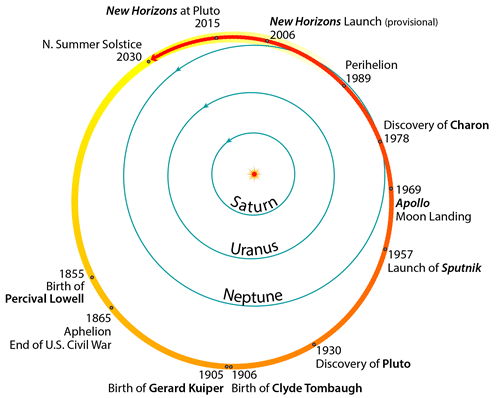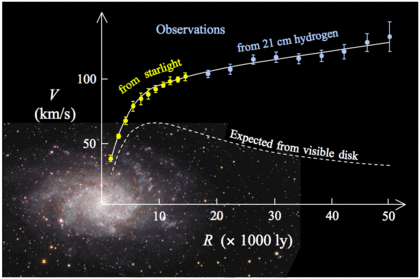Mercury's and Pluto's Orbits
Einstein's theory of gravity waves emitting from a mass requires mass to lose energy and therefore lose mass. On a planetary scale that means planets in the solar system must have decaying orbits. This has been studied extensively and never found true. In his attempt to prove decaying orbits he needed to predicate mercury's orbit as decaying.
Einstein knew the answer to his equation.. Light slows 100 microseconds or 30 kilometers as it passes through the Sun's atmosphere or Corona. He used this to develop his equation of Relativity. He decided the cause after knowing the effect.
If the answer is 4. Is the cause 2+2, or is it 3+1. To create an equation that proves 4, does not prove the cause is 2+2. Einstein used his equation to prove Mercury's perturbation, but is curved space observed. Einstein in essence created an equation to prove his theory.
The perturbation of Mercury's orbit is unusual but not necessarily unpredictable. It's orbit is a very pronounced elliptical orbit. Einstein and others have studied Mercury's orbit extensively, but is this orbit the singular cause of the precession? No planet orbit is perfect. It has a wobble in it's series of orbits. Each orbit follows a slightly different angular orbit from the previous one. After Mercury's completes it's precession it repeats it over and over.
The real cause of Mercury's precession is the solar system as a whole, is very slowly revolving around the Sun as an entire unit. Not all the planets are "fixed to the wheel" as the solar system revolves around the sun' but those further out from the sun have a lesser effect. This rotational force is from the Corona effect.
Why was Einstein never able to describe the mechanism of curved space relating to the precession of Mercury's orbit? It's quite simple. There is no relationship to his curved space theory that would describe Mercury's precession orbit.
The reason for Mercury's orbit precession is the solar system's rotates around the Sun's Corona. As it rotates the precession of Mercury's orbit also advances. In the Universe all objects have an angular rotation and this includes the Solar System. The Corona effect contracts space which results in positive gravity. This effect results in the slow rotation of the solar system around the Sun's Corona.
The .001 degree precession per century occurs and is repeated over along period. It takes about 3,600 years or about 15,000 orbits for Mercury's orbit to make a complete precession, or rotation. The orbits as seen today are closer to the planetary plane, some 7 degree tilt, but will this will change over an extended time.
All planetary orbits extending as far out as Saturn have been observed to have this unusual orbital precession. This leads to believe that the solar system as a whole is in a slow rotation around the sun.
If we take the results of Shapiro's in the 1960s it is abundantly clear Einstein's theory that Mass curves space is false. As indicated from his research any, even the smallest incremental distance change of light passing from the Corona , the effect on light and it's relative velocity drops to zero. Einstein's curved space theory literally disappears, when explaining gravity in our solar system. So these orbit perturbations are NOT from any theory of relativity. The Corona observed effect, only occurs at the corona.
If we take the speed of light and factor in the medium time that light slowed as it passed through the corona it results in light slowing 100 microseconds. This time delta is the value of how much the corona effect, alters space and time. In particular the amount of space that has been contracted /compressed.
29.9 km of space is continuously contracted. This small but significant amount has an effect on Mercury's precession, as it passes it's perihelion. but more importantly it produces positive gravity through out the solar system. To be more specific, space is compressed from the phenomena of the Corona effect. This compression of space only occurs at the Sun's corona but this compression is felt through out the solar system. This space anomaly is called the velocity of gravity.
Time, space (distance) and speed have all been closely related. This existence ends though when time and space are altered. Altered time then is no longer directly associated with space.
Pluto also has a pronounce elliptical orbit, that has an unusual tilt of 17 degrees from the Suns equator plane. Its orbit duration takes slightly more than 248 years. Hence Pluto's orbit has not been thoroughly studied. The Sun's gravity even at these distances does have an effect on Pluto's orbits. These effects are reflected in a decreasing tilt angle of the orbit as each orbit occurs. This effect is small but it's occurring. The problem facing the solar system is if the orbital flattens out it would endanger Neptune which has a similar orbital plane and orbital path.
Was Pluto involved in a planetary collision a 100 thousand years ago? That destroyed a planet that is now seen as the asteroid belt. Mars and it's two moon that are the closes planet to the asteroid belt definitely show signs of a past massive collision.





